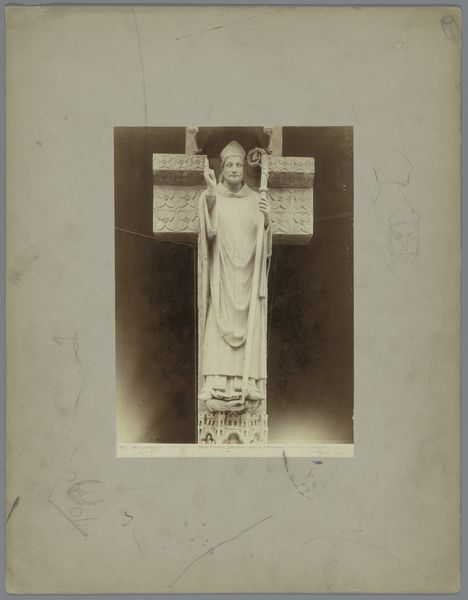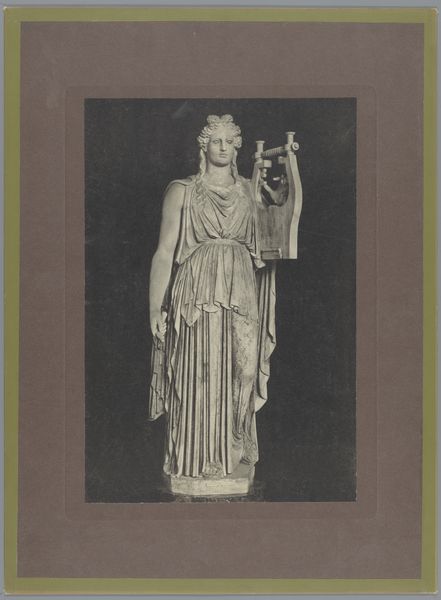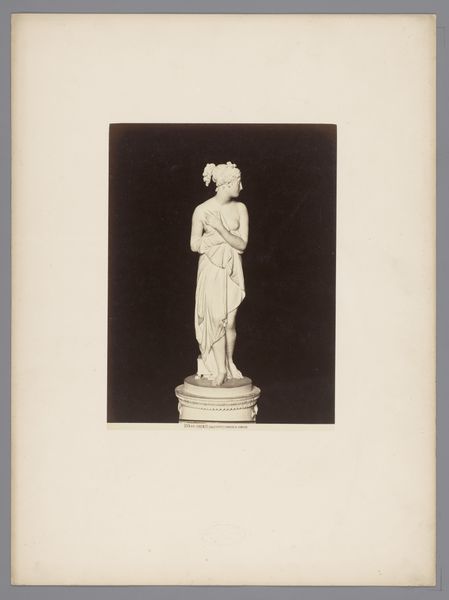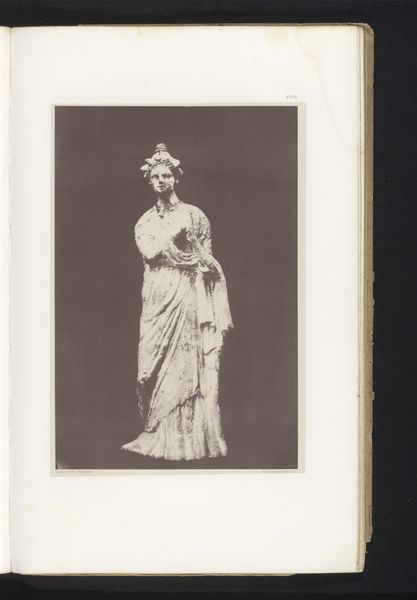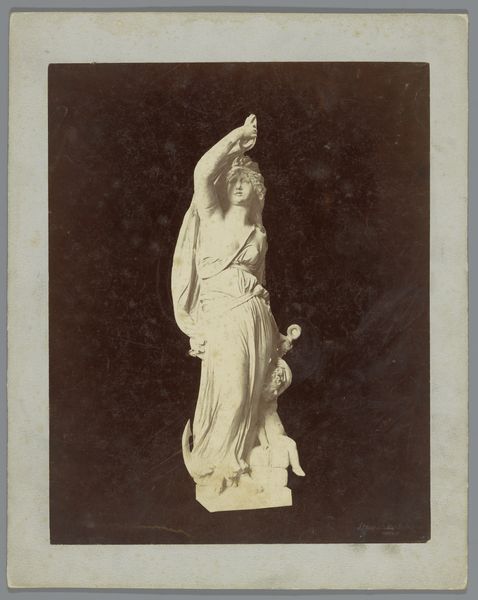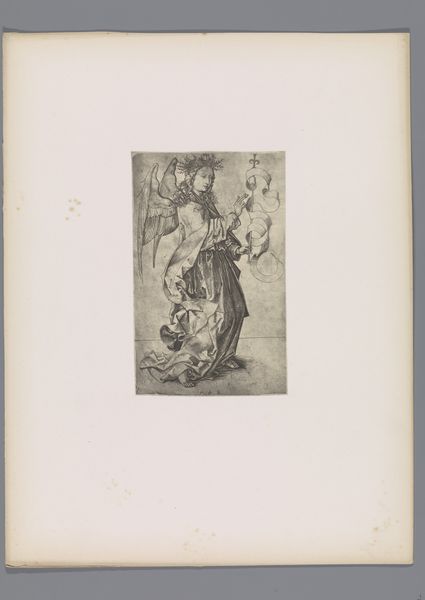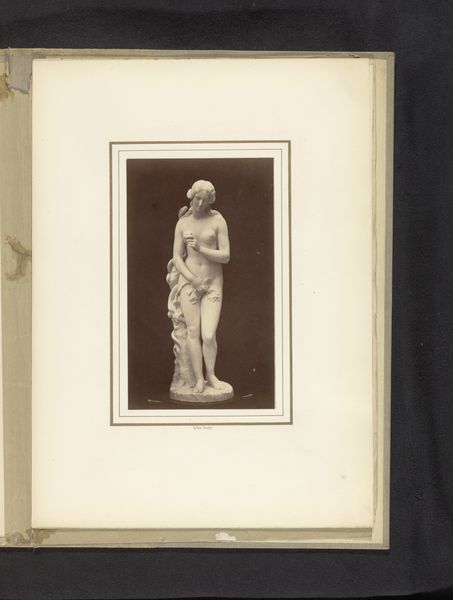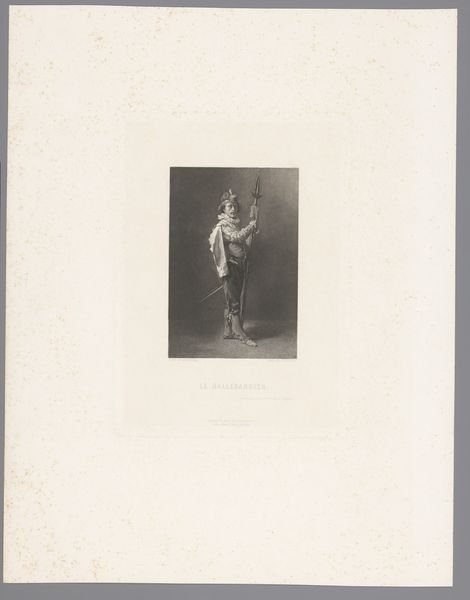
photography, sculpture, marble
#
portrait
#
medieval
#
photography
#
romanesque
#
sculpture
#
academic-art
#
marble
#
statue
Dimensions: height 226 mm, width 77 mm
Copyright: Rijks Museum: Open Domain
Editor: Here we have a photograph of a marble sculpture entitled "Beeld van Friedrich II von Truhendingen in de dom van Bamberg," dating from around 1900 to 1920. I’m struck by the figure’s solemn expression and the weight of the drapery. What can you tell us about this piece? Curator: It’s fascinating how the anonymous photographer captured this particular sculpture, isn't it? Consider how Friedrich II is depicted – not as an individual, but as a vessel of authority. What visual cues indicate his power and position? Editor: Well, he’s holding a staff, wearing what looks like a mitre, and is adorned with heavy robes. It all points to a figure of religious importance. Curator: Exactly. These aren’t mere aesthetic choices; they’re deliberate signifiers intended to project spiritual leadership and underscore divine mandate. What emotions or associations does this imagery evoke in you? Editor: I get a sense of established power, permanence. But also, a kind of distance. It feels like it represents more than a single person, right? Curator: Precisely. The sculptor and the photographer are using a shared visual language of authority, drawing upon centuries of tradition. It connects Friedrich to a larger lineage. It serves not just to commemorate, but to legitimize. What do you make of the contrast between the photographic medium and the Romanesque style it evokes? Editor: I hadn't considered that juxtaposition before, but I see how the relatively modern medium adds another layer to the cultural memory. Curator: Indeed. Through exploring these layers we can truly engage in the powerful intersection of art, memory, and meaning.
Comments
No comments
Be the first to comment and join the conversation on the ultimate creative platform.


